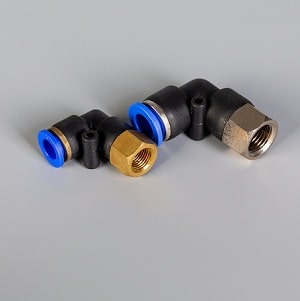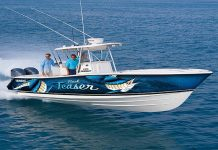Pneumatic systems are part of many industries. It is part of any process that uses compressed gasses with applications in mining, instrumentation, construction, and dentistry.
Like hydraulic systems, pneumatic systems also use fluid power. Since these systems deal with compressed air, we need airtight, strong, and durable brass pneumatic fittings.
Pneumatic systems are simple to run and efficient. However, to ensure reliability and safety, one does have to provide the right pneumatic fittings.
7 Factors to Consider When Selecting Pneumatic Fittings
 These parts connect the details of the pneumatic system, namely the hoses, pipes, and tubes. They are required to have a tighter seal than usual hydraulic systems.
These parts connect the details of the pneumatic system, namely the hoses, pipes, and tubes. They are required to have a tighter seal than usual hydraulic systems.
A small error in the fittings can cause the entire pneumatic system to collapse. The nuts and bolts connect various parts that give way, and the fault almost always lies in the faulty selection or inadequate supervision.
So, we must start right. Here are some of the factors that have to be kept in mind when selecting pneumatic air fittings:
Read: Top 10 Best Gate Valve Manufacturers in India
#1. Working pressure
Pneumatic fittings are rated according to the pressure range that they operate in. Working pressure ranges from 80 to 100 psi in most industrial pneumatic systems.
We must stick to the field — both the upper and lower limit. Operating above or below the range will cause the eventual failure of the system.
#2. Working environment
Since they are often an essential component of various instrumentation mechanisms, pneumatic systems are found in multiple applications and environments.
This includes settings that can be corrosive, such as marine applications and underwater installations. This will require the fittings to withstand the effect of such hostile environments.
This is where brass pneumatic fittings have such a great advantage. Brass is highly resistant to corrosive elements, with some types of brass specially designed to withstand seawater or high exposure to other such factors.
Read: 7 Different Types of Asphalt Mixing Plants
#3. Working temperature
Pneumatic fittings also come specified with a temperature range. This ensures these are used only in the proper temperature settings. A lower or higher temperature will affect the sealing and eventually cause failure.
#4. Type
Like many types of pneumatic systems, ether is also different. These include ball and sleeve fittings, compression, crimp fittings, end fittings, push-to-connect and threaded fittings.
Each of these has advantages and disadvantages that will suit a particular project. For instance, ball and sleeve fittings are handy where we need to frequently disconnect and reconnect, while compression fittings are used when dealing with considerable compressive force.
Read: When is The Time For Pipeline Intervention Services?
#5. Size
Since the entire function of the fitting is to fit into a system, size is significant. Once you have decided on the appropriate types, sizing is critical.
Sizing is instrumental in ensuring that we have an airtight fit. A wrong-sized part will be ultimately unsuccessful in forming a tight seal. The fitting will only fix and succeed in its purpose when undersized or oversized.
To determine the size of the fitting, we have to measure the size of the part it connects to. Parts like tubes, pipes, and hoses have both an outer and inner diameter.
These are ID (inner diameter) or OD (outer diameter). When selecting a fitting, you must determine which diameter you will use, that is, whether it will be used at the inner side or the outer diameter. So, a 1-inch OD will require a 1-inch OD fitting.
If you are dealing with threaded fittings, there are multiple sizing requirements that you have to keep in mind.
For instance, the male and female surfaces will have thread sizes. The thread size, in turn, is calculated according to the ID of the connecting vessel.
Related: Advantages and Types of SMC Junction Box
#6. Function
Each fitting is good at performing a specific function. The function of the fitting will determine the particular fitting you need within a type.
For instance, fittings that manipulate pipe lengths include adapters, couplings, unions, caps, and plugs. Fittings that are added to change the vessel’s directions include elbow, tee, and cross.
#7. Material
Finally comes the material. Many materials are available in fittings today, including plastics, composites, and metals like aluminum, steel, stainless steel, and brass.
Brass pneumatic fittings are a popular choice because they are resistant to corrosion, with good conductivity and flexibility in high temperatures.
Its machinability made it a popular choice in compression and threaded pneumatic fittings.












